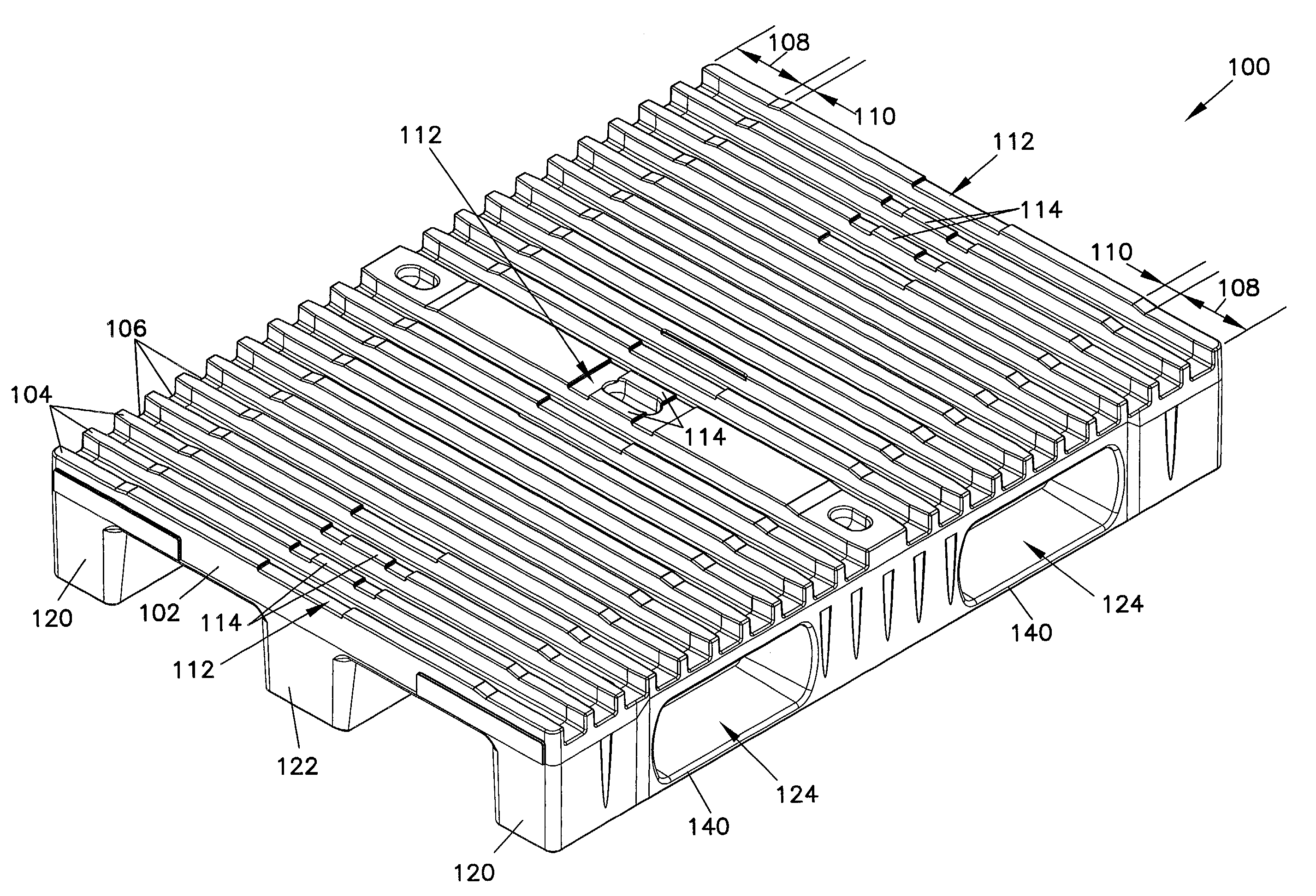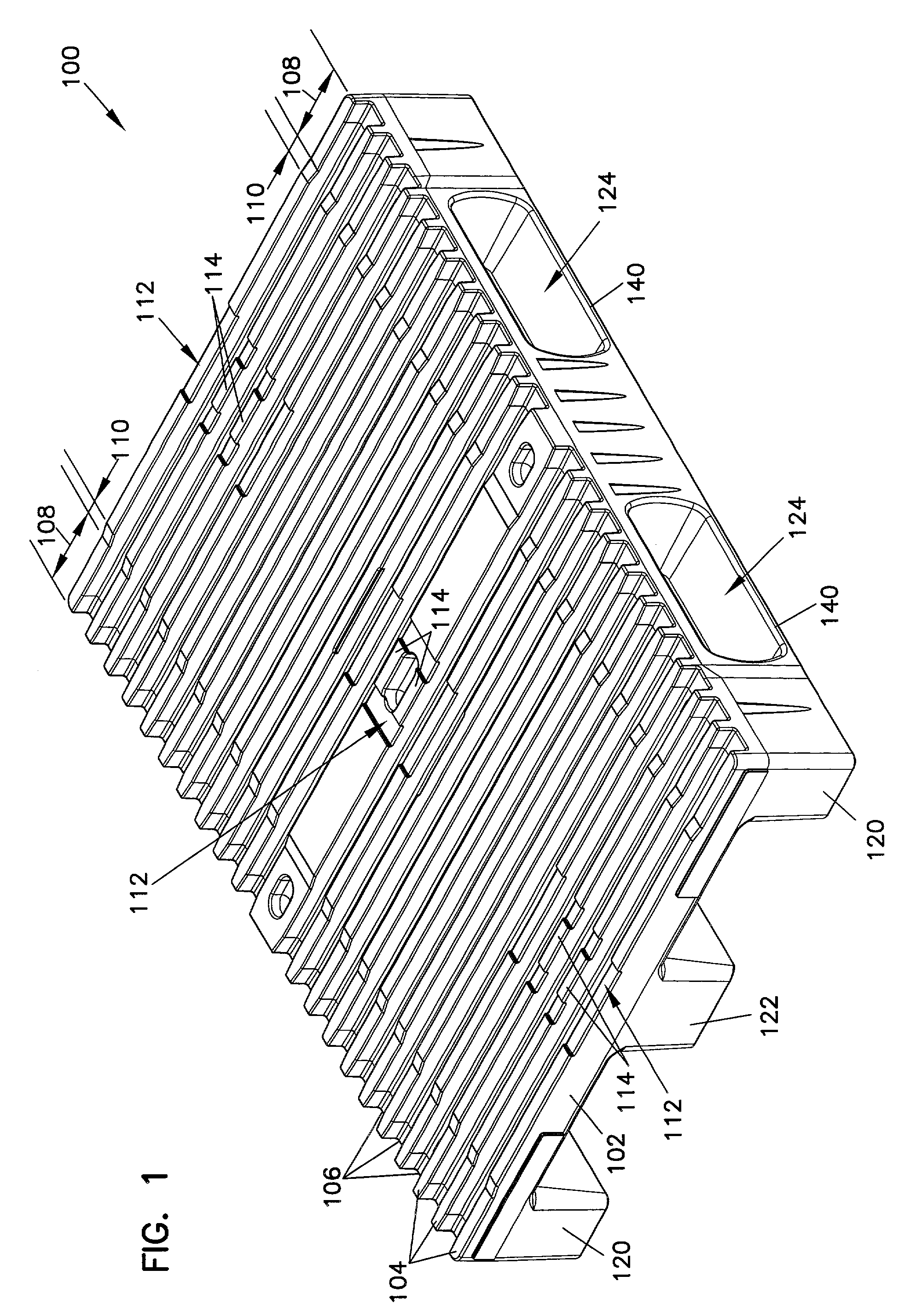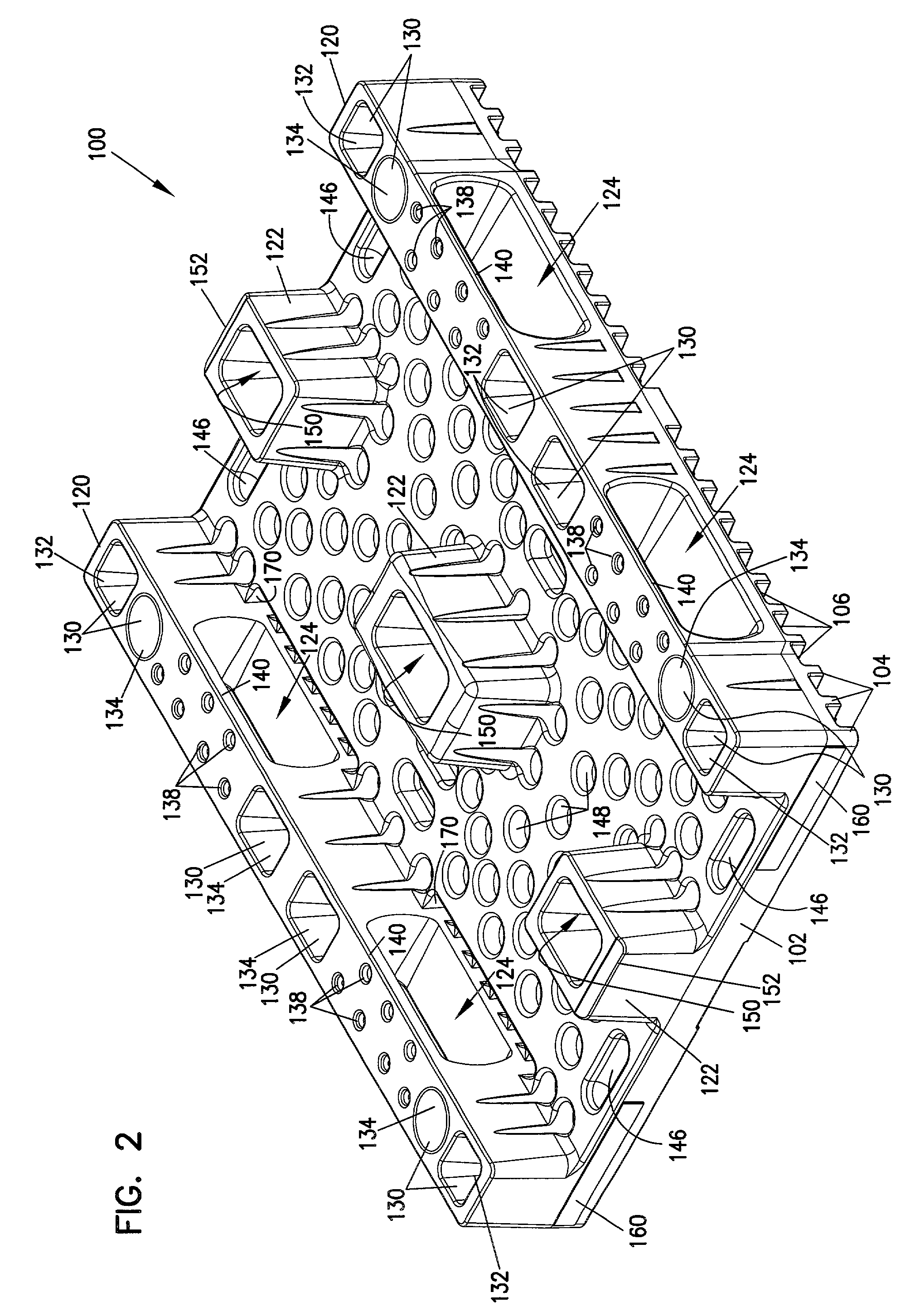Pallet
a technology of pallets and pallets, applied in the field of pallets, can solve the problems of large amount of space required for storing pallets, unstable stacks, and high stacks, and achieve the effect of improving alignment and engagement with handling equipment and articles
- Summary
- Abstract
- Description
- Claims
- Application Information
AI Technical Summary
Benefits of technology
Problems solved by technology
Method used
Image
Examples
Embodiment Construction
[0025]Referring now to the drawings, and in particular to FIG. 1, there is shown a pallet, generally designated 100. The pallet 100 includes a typically rectangular deck having parallel ribs 104 extending across the width of the deck 102. The ribs 104 form channels 106 there between, which widen from the center to the edges of the deck 102 while the centerlines of the channels 106 remain spaced equidistant from one another in a preferred embodiment. The ribs 104 are tapered at their ends to allow insertion of tines for lifting objects from the upper surface of the deck 102. The upper surface of the deck 102 also includes recesses 112 having raised center portions 114 that extend upward to the upper surface of the deck 102. The recesses 112, as best shown in FIG. 3, receive the bottoms of legs 122, best shown in FIG. 4, to provide for nesting of the pallets 100 when stacked while empty. The legs 122, also commonly called feet, include bottom recesses 150 that receive the center porti...
PUM
 Login to View More
Login to View More Abstract
Description
Claims
Application Information
 Login to View More
Login to View More - R&D
- Intellectual Property
- Life Sciences
- Materials
- Tech Scout
- Unparalleled Data Quality
- Higher Quality Content
- 60% Fewer Hallucinations
Browse by: Latest US Patents, China's latest patents, Technical Efficacy Thesaurus, Application Domain, Technology Topic, Popular Technical Reports.
© 2025 PatSnap. All rights reserved.Legal|Privacy policy|Modern Slavery Act Transparency Statement|Sitemap|About US| Contact US: help@patsnap.com



